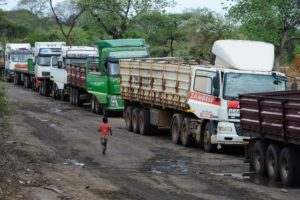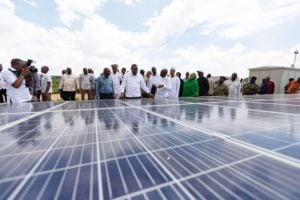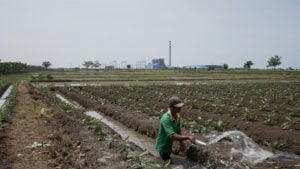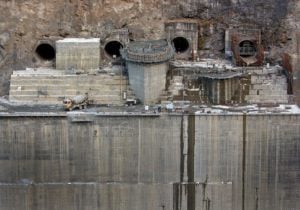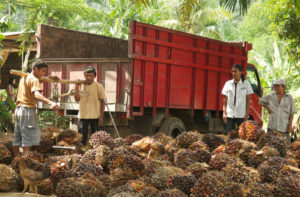As the world transitions to more renewable forms of energy, surging demand for critical minerals such as cobalt, nickel, aluminium and lithium could bring significant risk to communities affected by mining and mineral processing.
Yet many such communities have no channels available to raise concerns or seek redress. This leaves the door open for abuses and greenwashing. These not only harm affected communities but are bad for companies managing environmental and social risks in their investment and supply chains. They are also bad for investors, buyers and end users seeking to avoid the pitfalls caused by unethical operations.
China is a vital node for global supply chains in electric vehicle batteries, solar photovoltaic equipment, and other mineral-intensive technologies necessary for a green transition. Recent developments in China suggest stronger accountability to local communities may be coming.
In November 2022, the Responsible Critical Mineral Initiative (RCI; formerly the Responsible Cobalt Initiative) and the China Chamber of Commerce of Metals, Minerals and Chemicals Importers and Exporters (CCCMC) announced that they are creating a new accountability mechanism for the mining sector.
Covering the value chains of all minerals, it will be the first accountability mechanism established by a Chinese industry association allowing communities to raise concerns about the social and environmental impacts of an overseas mining project. If designed and implemented well, it will be a significant step toward closing the “accountability gap”.
The role of accountability mechanisms
Accessible, fair and effective accountability mechanisms provide an important forum for affected people to express concerns and address grievances.
We have worked with many communities affected by mining who have successfully leveraged such mechanisms. These include a community in Guinea that, after being evicted at gunpoint to make way for a gold mine owned by a South African firm, filed a complaint to the accountability mechanism for projects supported by the International Finance Corporation (IFC). They ultimately secured agreements with the company to improve access to basic facilities at the resettlement site, including water and schooling, and received increased compensation, among other outcomes.
We also worked with herders in Mongolia who filed complaints to IFC’s mechanism regarding gold and copper mines that had depleted water resources and disrupted pasture lands. They secured commitments from the mining company and local government to resolve key issues.
Accountability mechanisms also create channels for investors and corporate executives to hear about environmental and social risks directly from local communities, who are well-placed to know if a project is not complying with environmental and social safeguards. This gives companies the opportunity to address issues before they escalate, making accountability mechanisms a crucial component of a company’s risk management framework.
The accountability gap
Many mining and mineral-processing projects that are crucial to the energy transition unfortunately cause social and environmental harms. These include deforestation, pollution and water scarcity, labour standards violations and displacement of local communities. Companies linked to such damages through their supply chains are under increasing scrutiny. For example, Tesla, Apple, Google, Dell and Microsoft were all sued over alleged forced child labour in mines in the Democratic Republic of the Congo producing cobalt for use in their products. Zhejiang Huayou Cobalt, a major Chinese firm, was named as one of the suppliers.
CCCMC has established various standards and guidelines since 2014, to help companies address the social and environmental risks in their overseas mining and mineral operations. It also launched the Responsible Cobalt Initiative in 2016 – the precursor to the Responsible Critical Mineral Initiative – which developed a due diligence standard for the cobalt supply chain in 2018 (revised in 2021). However, without mechanisms to hold companies accountable, implementation of these voluntary guidelines has been limited. With the new initiative backed by CCCMC and RCI, that could be changing.
Will the new accountability mechanism work?
In December 2022, RCI and the CCCMC sought public input on the proposed accountability mechanism. Its draft policy states that communities impacted by mining-sector activities can file complaints alleging that companies did not adhere to “recognised codes for responsible business conduct”. These codes include CCCMC’s Guidelines for Social Responsibility in Outbound Mining Investments, the Chinese Due Diligence Guidelines for the Mineral Supply Chain, and the United Nations Guiding Principles on Business and Human Rights, among others. The mechanism will offer a mediated dialogue process for communities and companies to negotiate redress for environmental and social impacts. Depending on the nature of the case, the process also includes fact-finding by independent experts to support the resolution of disputes. Aspects of the case process will be documented publicly.
Increasing these companies’ accountability to affected communities would be a significant step toward ensuring a just transition, but only if designed and implemented well.
Currently, it is not clear exactly which companies the mechanism will apply to, but it is likely to be particularly relevant to members of RCI and CCCMC. RCI members include Chinese mining companies, refineries and other companies along the critical minerals value chains. They also include international end users such as automotive manufacturers and tech companies. (Huayou Cobalt and Jiana Energy – Chinese suppliers of cobalt products and battery materials – as well as BMW and Dell, were on the board of the Responsible Cobalt Initiative when it was first established.) Many Chinese mining companies are CCCMC members. Increasing these companies’ accountability to affected communities would be a significant step toward ensuring a just transition, but only if designed and implemented well.
What constitutes an effective accountability mechanism is well established. United Nations guidelines state it must be accessible, legitimate, predictable, transparent, equitable, rights-based and a source of continuous learning for companies and investors. In practice, this means it needs to provide communities with a safe and fair process for achieving redress for environmental and social harm.
The mechanism proposed by the RCI and the CCCMC has important strengths to this end, including provisions regarding the right to representation, the commitment to rights-based agreements, confidentiality and the prohibition of coercion and retaliation. However, some questions about its effectiveness remain. For one, there should be further clarification as to which corporate actors are governed by it so that communities can better predict whether it is a relevant avenue for justice. Right now, it is challenging to find a list of current RCI and CCCMC members. Moreover, the mechanism needs to demonstrate how it is independent from the companies who could be parties in a complaint, and should disclose the makeup of the committee that processes complaints.
There are two additional steps the mechanism should take to improve accessibility for all stakeholders, including communities who often face financial limitations, language or technical barriers, logistical issues and reprisals. First, strengthen the commitment to preventing and responding to reprisals against community complainants by building in concrete protection measures. Second, establish an adequate budget for the functioning of the mechanism so that community applicants do not pay for the case process. Establishing such budgets is common practice in existing accountability mechanisms.
Toward greater accountability for Chinese overseas projects
RCI and CCCMC’s proposed mechanism is an important part of a larger move toward accountability for Chinese overseas investments. In June 2022, the China Banking and Insurance Regulatory Commission (CBIRC) published Green Finance Guidelines that require Chinese banks and insurers to set up their own accountability mechanisms to hear and address concerns from impacted communities overseas. This means policy banks, such as the China Development Bank and the Export–Import Bank of China, and commercial banks, like the Bank of China and the Industrial and Commercial Bank of China, need to set up accountability channels to hear from the people they impact. It remains unclear, however, when and how this requirement will be implemented by each financial institution.
For over a decade, Chinese state institutions and industry groups have issued guidance to companies and banks on how to improve overseas environmental, social and governance performance, but the lack of strong implementation frameworks and accountability mechanisms has limited their impact. The move towards establishing such a mechanism in the critical minerals sector represents an important first step. It could inform the development of mechanisms for other sectors, especially as we have yet to see any public action by Chinese banks or insurers to set up their own mechanisms.
The mining sector accountability mechanism is expected to be released in the first half of this year. As an industry-led initiative, it will only be legitimate if communities determine it safe and worthwhile to use. At a minimum, this will require the process to be free for community complainants, the people managing the cases to be independent from company respondents, and safeguards be put in place to prevent and respond to retaliation.
If designed and implemented with the rights of impacted communities in mind, the new mechanism could be positive for communities, companies and the environment, setting an example for more accountability mechanisms for Chinese overseas investment. If the mechanism fails to meet these expectations, the accountability gap will persist, and both communities and companies will continue to pay the price.
